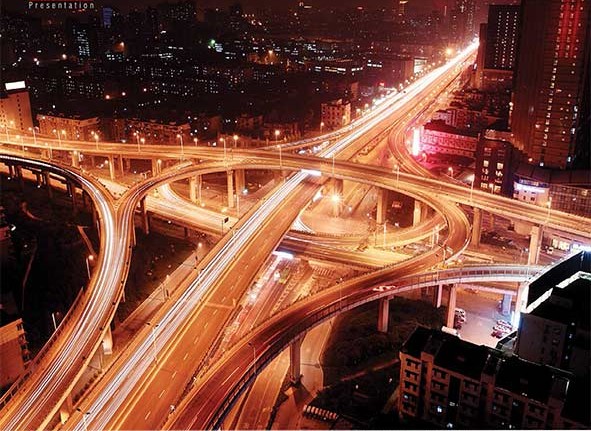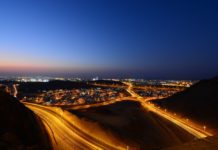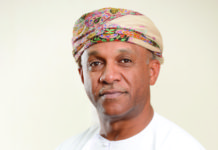The massive investment in infrastructure facilities like airports, ports and road, will drive cross sectoral growth in Oman
Oman plans major structural reforms to attract private investment in infrastructure development. The recent plans to introduce a new regulation on public-private-partnership (PPP) and a $1 billion infrastructure fund are all part of a larger strategy to channelise private investment in infrastructure development.
The State General Reserve Fund (SGRF) – the sovereign wealth fund of Oman, has recently received government approval to launch a $1 billion-infrastructure fund for channelising private investment into major infrastructure projects. The new fund will be targeting investors in the Gulf as well as funds from outside the region. Gone are the days when the Sultanate could shell out billions of rials for developing its infrastructure projects like swanky airports, express ways and sea ports. And now, major infrastructure projects, which require investments worth billions of rials, are all proposed to be developed in active partnership with private investors.
Private sector participation
A new law to encourage PPP projects in various sectors is expected soon. The new PPP Law, which is in an advanced stage of finalisation, has the potential to attract investment in strategic projects and help the country to sustain its economic growth. Private investors, including foreign investors, are looking for a business environment where returns on capital will have to come fast and therefore, the amendments should ensure that licences and permits are issued quickly, reducing gestation period for projects. Also, the new law should ensure a robust return on investment by private sector entrepreneurs, who will invest in several sector, including infrastructure. In a way, this will ease the financial burden on the state budget and will help sustain investment to spur economic growth. The purpose of the new law is to ensure the completion of all ongoing projects and implement strategically important ventures, which is expected to sustain economic growth and employment generation.
For instance, the Special Economic Zone Authority at Duqm (Sezad) is strongly pursuing the PPP route in the implementation of infrastructure and utility projects at the emerging maritime and industrial hub near the port. The proposed projects include road development, other transport infrastructure, waste management, renewable energy, airport facilities and water desalination.
Plans are also afoot to attract private investment in infrastructure through investment holding firms, which will facilitate joint venture with active investment from private sector. For instance, Duqm Development Company (Tatweer), which is the investment arm of Special Economic Zone Authority of Duqm, is planning to attract private investment in Duqm for infrastructure development.
The PPP law will encourage an ideal base to ease the implementation of several joint projects between the government and the private sector. Once the PPP Law comes into effect, an enterprise model for such partnership ventures will emerge, leading to joint investments by government and private entities.
Tanfeedh programme
The National Programme for Enhancing Economic Diversification (Tanfeedh) has also suggested innovative ways of financing infrastructure projects and the transfer of current government assets to the private sector. An important project proposed in PPP model, which will be of national significance, is the RO1 billion Duqm-Shuwaymiyah rail corridor for transporting minerals to the port. The plan to develop Duqm-Shuwaymiyah rail project came up after freezing the much-talked about National Railway project in view of certain connectivity issues with other GCC states a couple of years ago. The objective of the railway line is to transport limestone and gypsum and few other minerals to the port for exporting to overseas markets. The Sultanate is now looking at private players to develop rail corridor connecting Dhofar mining areas with Duqm port. Oman Global Logistics Group, the infrastructure holding company of the government, is in talks with private sector mining companies to set up the 350km rail link in joint venture.
The preliminary design of the rail network done by Italian firm Italferr, includes lines between Shuwaymiyah and Manji to Duqm port. Metallic minerals found in Oman include chromite, copper, gold and silver, manganese, lead and zinc and laterite. Non-metallic minerals include limestone, dolomite, gypsum and silica sand. The rail network project was proposed almost two years ago, but a concrete decision is yet to be taken.
The on-going multi-billion investment in port development is expected to help Oman to attract more and more transshipment trade, in a bid to make the country a regional hub. A state-of-the-art transport infrastructure, along with port connectivity, will attract logistics firms from across the region to set up their logistics centres in Oman for redistribution for the region. Although some of the infrastructure projects are on hold, the government is determined to complete infrastructure development in Duqm and redevelopment of Muscat port, which are crucial for attracting the much-needed foreign investment necessary for diversifying the economy.
Duqm Port, which started operation almost four years ago for receiving specialised project cargo for oil and gas industry, is investing heavily on berth development, support infrastructure, gate, offices, roads and utilities. A major fishing harbour is also taking shape at Duqm, which includes dredging the harbour basin up to six meters, land reclamation to construction of port service buildings besides development of a tourism area with a wharf, pontoons, floating moorings for fishermen pier with pontoons for coast guard, a crane for boat to maintenance, ramp for boats, marine services and facilities, service buildings, internal roads, parking lots and breakwaters with a total length of 3.4 kilometres.
A work for building four terminals on the commercial pier (two for containers about 1,600-m long and 350-m wide to handle about 3.5 million twenty-equivalent foot units (TEUs) annually) has already been started. There will also be a terminal for dry bulk commodities with a capacity of about 5 million tonnes per annum. Another $510 million-bulk terminal is being built by Royal Boskalis Westminster. The scope of the work includes the engineering, design, procurement and construction of a bulk liquid berth terminal at Duqm Port. The work also include deepening of the port basin to a depth of 18 metres, reclamation of new land, construction of a quay wall for one km, a double berth jetty island and stone revetment. All the remaining projects at Duqm port, including the bulk liquid terminal, are expected to be completed in 2020.
The commercial quay at Duqm port is divided into three main areas – 300 meters of cargo terminal, 1.6 kms of container terminal and 300 meters for a dedicated break bulk terminal for mining and mineral companies. Further, re-development of Sultan Qaboos Port with a massive waterfront facility, and another terminal for Sohar port are other major initiatives to enhance port infrastructure.
Waterfront and ports
The Omani government recently handed over Muscat Port’s waterfront assets to Omran, the wholly government owned tourism investment vehicle, for the implementation of the ambitious Mina Sultan Qaboos Waterfront Project. Muscat port is getting a makeover with the expected development of high-end marina, hotel facilities and retail outlets in its new focus on tourism and leisure destination. The development will follow the blueprints of already established and historic ports such as Cape Town, London and New York.
The whole re-development plan of Muscat port, which will involve a capital expenditure of RO500 million, is aimed at creating a state-of-the-art tourism infrastructure to attract tourists from across the world. The mega waterfront development at Muscat port will span 451,000 square metres, and will include hotels, residential apartments and houses around the marina.
The state-owned Oman Tourism Development Company (Omran), which has a majority stake in the company that develops the port, has already launched the first phase of the Mina Al Sultan Qaboos Waterfront Project. The first phase of the integrated mixed-use waterfront destination is projected to be completed by 2020, and will transform the current commercial Port Sultan Qaboos area into a major tourism-based development, spanning 64-hectares area. The Mina Al Sultan Qaboos Waterfront will include business and residential zones, destination mall, six hotels (including three-, four- and five-stars), recreation amenities, tourist attractions as well as docking facilities for cruise liners and yachts. The plan is to create a world-class waterfront development of outstanding beauty and interest that celebrates the maritime history of Muscat and showcases the very best of Omani culture, heritage and innovation to a global audience. Upon completion, it will provide an extraordinary year round tourism hub that is rich in activities, entertainment and experiences, and is accessible to all. Destination shopping, waterside restaurants and cafes, boutiques, offices, entertainment and cultural facilities, as well as super yacht and leisure boat marina will also be featured in the first zone.
Meanwhile, Marafi Asyad Company, a newly-established subsidiary of Asyad, started operating the port from the beginning of this year. The move follows the Ministry of Transport and Communications (MoTC) granting a license to state-owned Asyad to take charge of the facility. In line with Asyad Global Vision, Marafi is looking to develop the port to become an international hub, forging global business relationships. Another major industrial port – Sohar port – is also planning to further expand its facilities. Sohar Port and Freezone signed an agreement with Dredging International NV – Earth Moving Worldwide for the development of phase 1 of the Sohar Port South construction. With an investment of $24 million, the agreement will see the development of the first 50 hectares of useable land within the new port expansion, which is expected to be fully completed by the fourth quarter of 2018.
However, the entire development plan of Sohar Port South Development involves extensive land reclamation, which will ultimately add 200 hectares in total to the present capacity of Sohar Port, which currently stands at around 2,000 hectares. This expansion is essential for Sohar Port and Freezone to compete on a larger scale, and emerge as a logistics hub of choice within the Middle East region. The Sohar Port South Development will support increased trade flows in the Sultanate and will allow shipping lines to launch more direct calls to the port, opening the doors to a wide variety of customers coming to Sohar in the future. The additional area at the port will significantly boost its ability to handle larger volumes of cargo traffic as well as create new and sustainable jobs in Sohar.
Investors are lining up to take advantage of the additional 200 hectares being offered as part of the Sohar Port South Development. One of the first investors on-board is Trescorp – a Singapore-based oil and petroleum products trading firm. In September 2017, the company signed a pact with Sohar Port and Freezone to develop a 45-hectare terminal for the handling, storage and blending of crude oil, fuel oil and diesel at the port.
The massive investment in infrastructure, especially transport infrastructure facilities like airports, ports and road, will drive growth in several sector like tourism and logistics sectors. For instance, port development will drive logistics growth, while airport developments will help encourage tourism growth.







